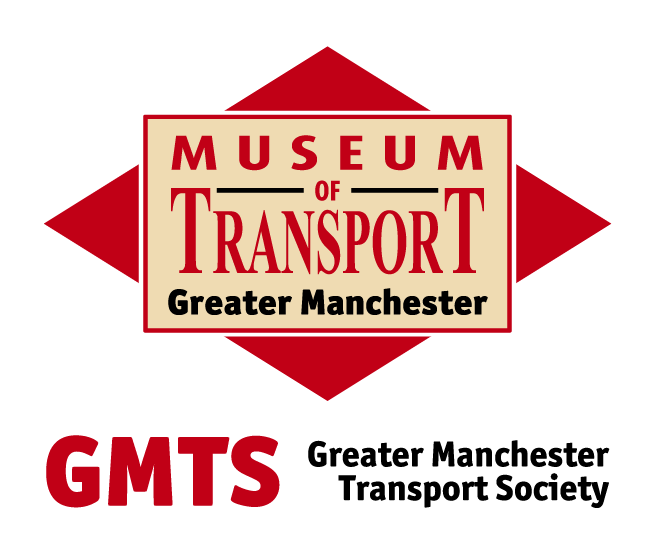1824 John Greenwood starts a regular horse bus service from Pendleton, Salford to Market Street, Manchester, the first regular horse bus service in the UK (1st January).
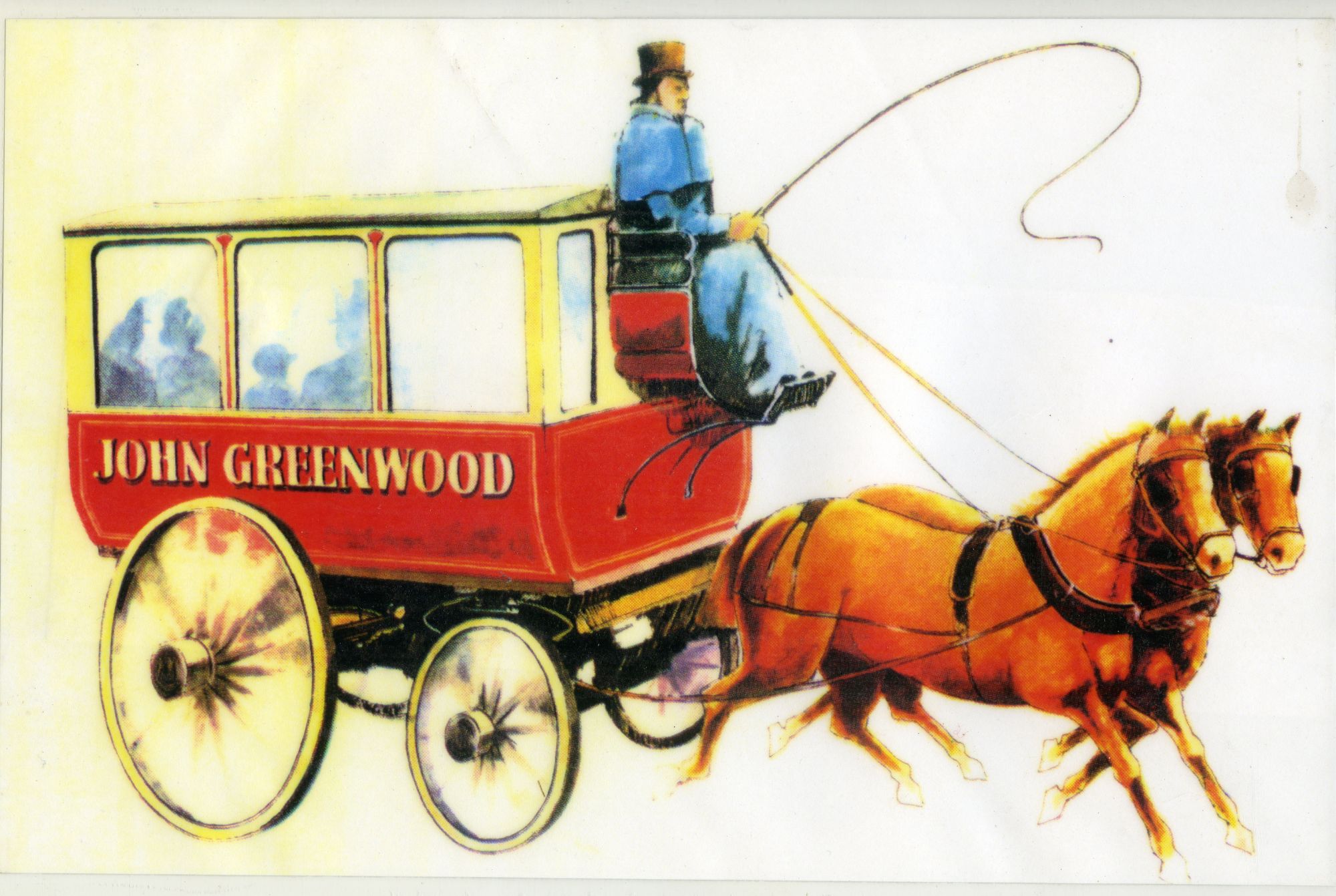
1830 First horse bus service between Manchester and Stockport
1830 Official opening of the Liverpool and Manchester Railway (15 September).
1830 A horse bus service introduced by Henry Charles Lacy from the newly opened Liverpool and Manchester Railway terminus at Liverpool Road to Manchester’s Market Street.
1832 Stage Coach Act in 1832 officially recognises that passengers are being set down or taken up, a distinct change from the accepted conditions of coach operation before this time.
1840 Railway Regulation Act: railway safety and supervision for the first time.
1847 Town Police Clauses Act comes into effect, which covers licensing of vehicles and drivers and a greater degree of control over the operation of buses and coaches.
1850 64 omnibuses are now running in Manchester, for which 387 horses are required.
1851 John Greenwood, the founder of the original horse bus, dies and is succeeded by his son, John Greenwood Junior.
1852 A new type of vehicle is introduced by a Mr. McEwan. It is a much larger, door-less double deck vehicle, drawn by three horses, and carrying 42 passengers.
1856 First horse bus services commence in Rochdale.
1861 Attempt made to introduce a form of rail traction, using Haworth’s Patent Perambulating Principle, in Salford (August). Operation is not a success.
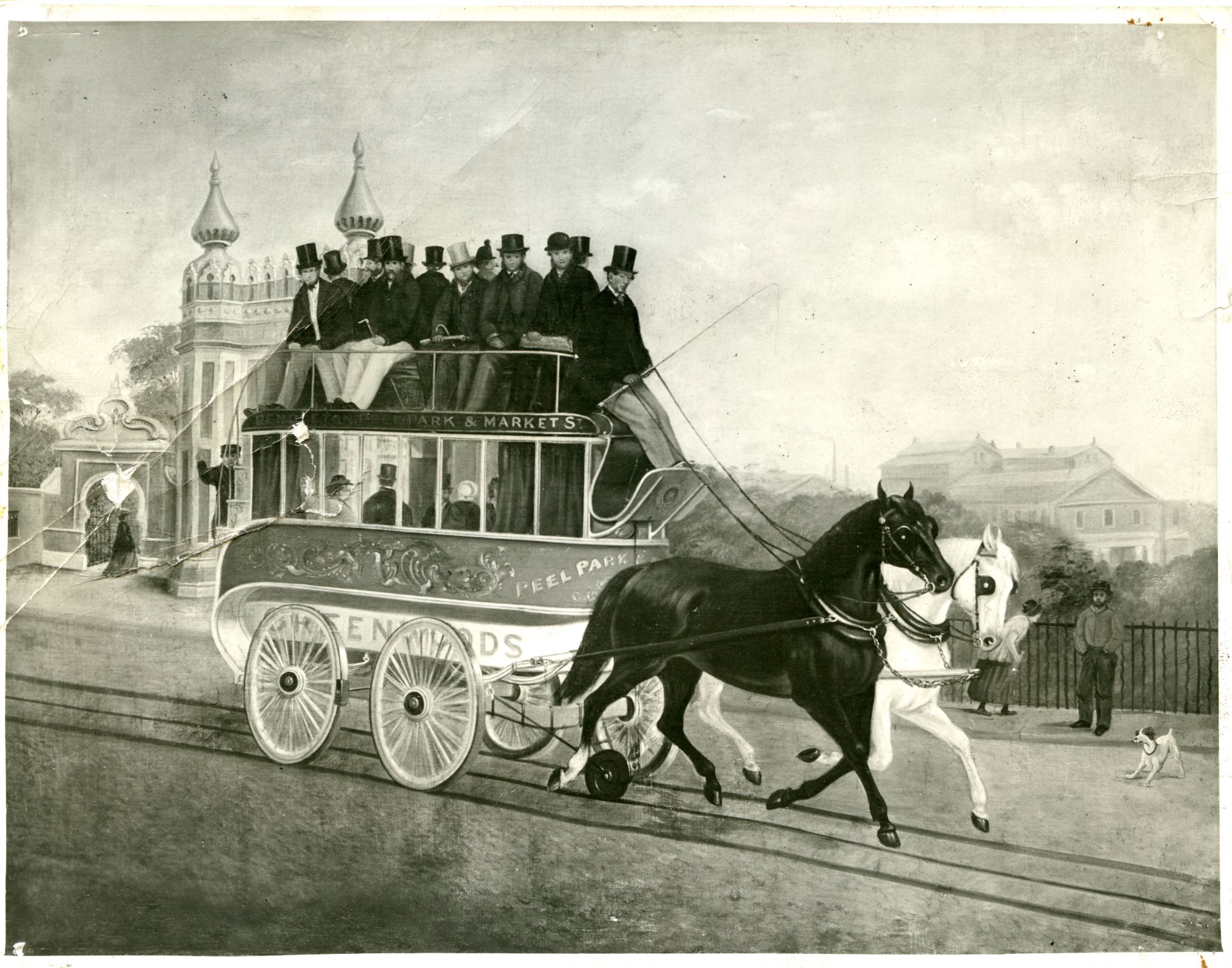
The Five-Wheeled Omnibus - Pendleton to Manchester 1861-1866. Original on display in Salford Museum and Art Gallery.
1865 Manchester Carriage Company is formed to operate horse buses, incorporating John Greenwood’s company (1 March).
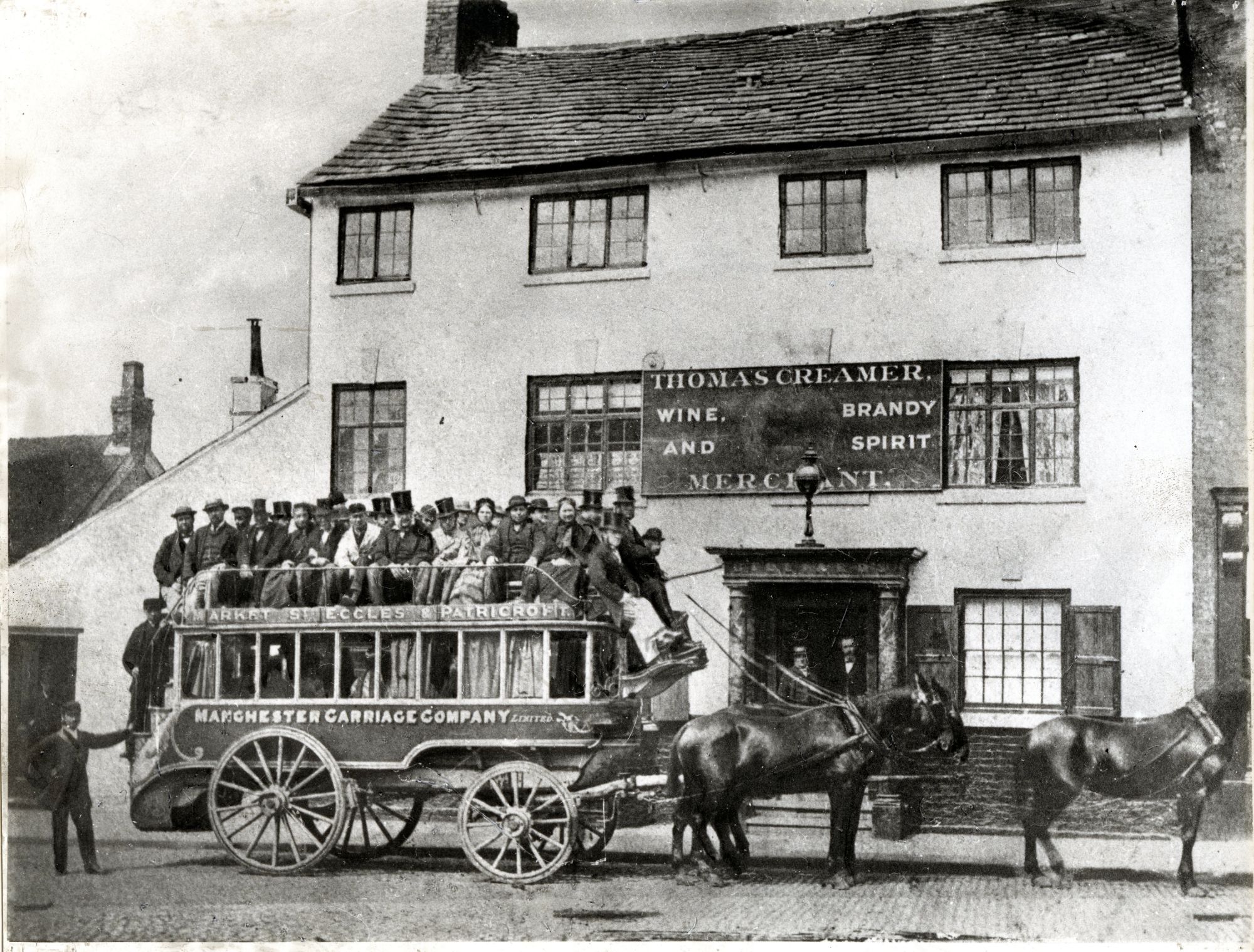
A Manchester Carriage Company horse bus in Eccles town centre
1870 Tramways Act: local authorities can construct tramways, but not operate them - the tracks have to be leased to private companies for 21 years.
1870 The corporations of both Manchester and Salford obtain Tramways Orders under the 1870 Tramways Act, which allows them to construct and lease, but not operate, tramways within their respective districts.
1870 First horse bus service commences between Rochdale and Oldham (25 December).
1874 Horse bus service begins between Stockport and Hazel Grove.
1877 Manchester Suburban Tramways Company starts operation of horse trams under the title of Manchester & Salford Tramway Company between Bury New Road and Deansgate (17 May), the first tramway in Greater Manchester.
1877 Salford Corporation constructs several miles of horse tramway line and leases to Messrs Busby and Turton, later to Manchester Carriage and Tramways Company (MCTC).
1878 Manchester Suburban Tramways Company runs horse trams to to Hollinwood.
1880 First horse tram runs into Stockport from Manchester (May).
1880 Wigan and District Tramways Company starts first horse tramway in Wigan (31 July).
1880 First horse trams run in Bolton by Edmund Holden and Company.
1880 Manchester Carriage and Tramways Company (MCTC) incorporated (merger between the Manchester Suburban Tramways Company and the Manchester Carriage Company).
1881 Manchester Carriage and Tramways Company operates horse trams from Manchester to Stalybridge via Ashton-under-Lyne (June) for the first time.
1883 First steam tram operates in Wigan by the Wigan and District Tramways Company.
1883 The Manchester, Bury, Rochdale and Oldham Steam Tramways Company opens its first section of route in Rochdale (7 March) and in Bury (12 March).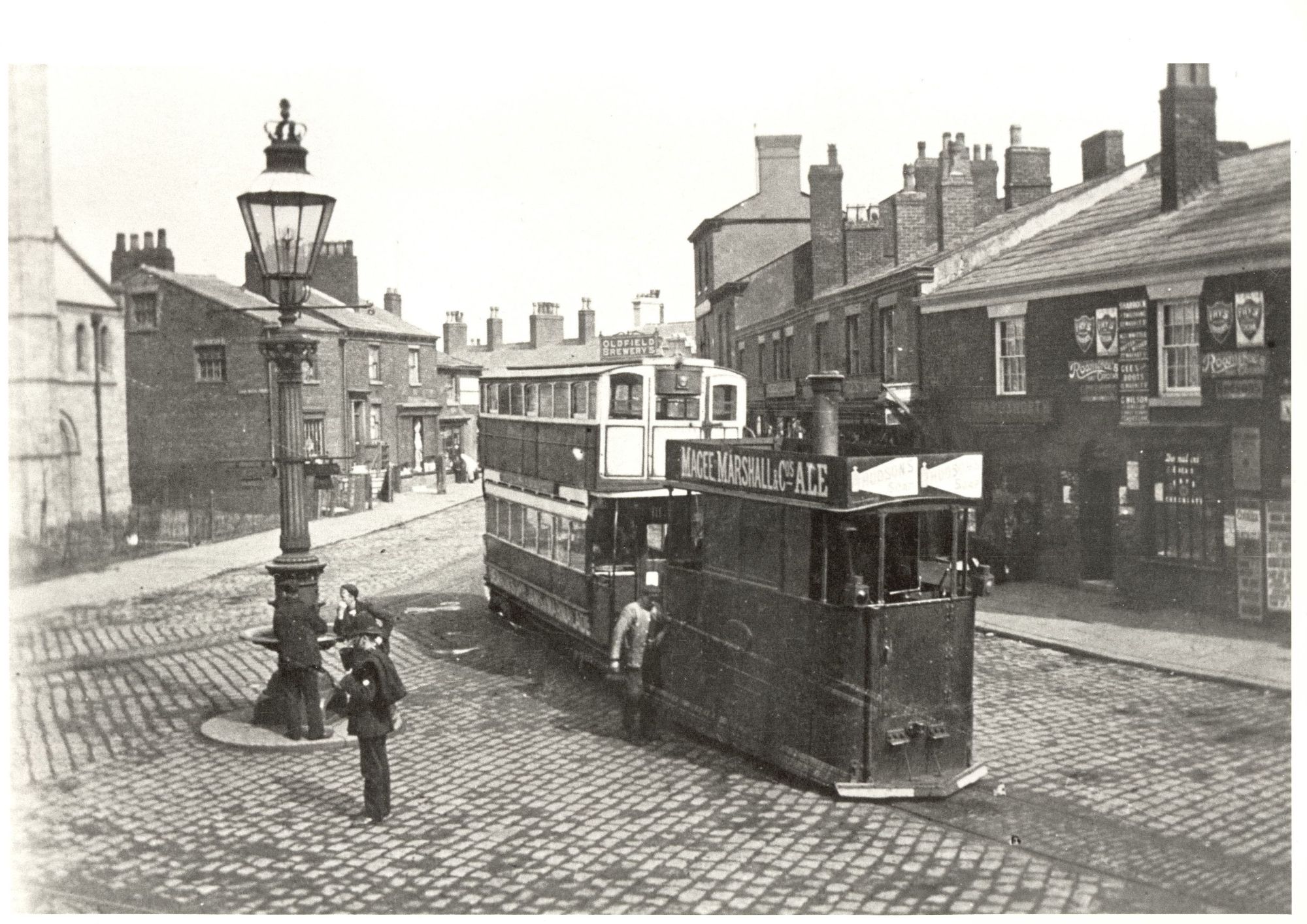
Steam tram seen in Hindley, at the junction of Market Street, Bridge Street and Ladies Lane (St John's Church is on the left)
1887 The Manchester, Bury, Rochdale and Oldham Steam Tramways Company goes bankrupt.
1888 The Manchester, Bury, Rochdale and Oldham Steam Tramways Company is reformed dropping “Manchester” from its title.
1889 Stockport to Hazel Grove tramway opened, by the Stockport and Hazel Grove Carriage and Tramway Company Limited (April).
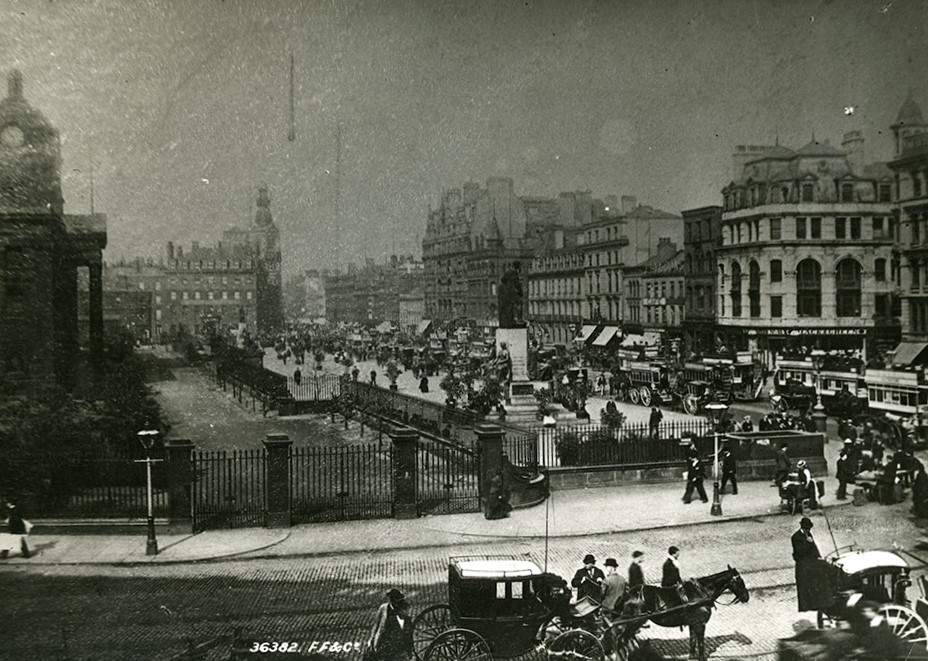
This is Manchester Piccadilly with the original Manchester Royal Infirmary still occupying the site of Piccadilly Gardens. The original Lewis’s Department Store is in the background.
1891 Wigan and District Tramways Company is sold to a Wigan Councillor (24 September).
1894 Manchester Ship Canal opens (1 January)
1895 Manchester Corporation adopts a resolution to take over the tramways and operate them as an electric system
1896 Standing Order at the House of Commons which had prevented local authorities from operating their tramways is revoked.
1896 Light Railways Act 1896 which allows councils to construct tramways.
1897 The Trafford Park Estates Company lays down a tramway to be operated by the British Gas Traction Company.
1898 A conference in Manchester decides larger local authorities should operate their own tramways and those of the smaller dependent authorities.
1898 The Rochdale Corporation Tramways Department is created.
1898 The Wigan Corporation Act allows Wigan Corporation to construct and operate additional tramways in Wigan (28 July).
